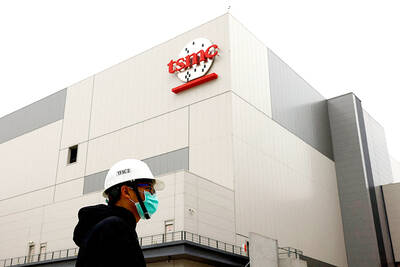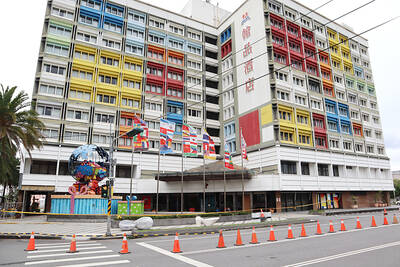Taiwanese banks’ total pretax earnings in May declined by 17.8 percent year-on-year to NT$27.23 billion (US$920.4 million), due to the persistent effects of the COVID-19 pandemic on economic activity, the Financial Supervisory Commission (FSC) said on Tuesday.
However, pretax profits at the banks’ offshore banking units and their branches in China grew by 3.4 percent and 35.6 percent from a year earlier respectively, commission data showed.
In Taiwan, profits posted in banks’ domestic banking units and their overseas branches in May fell by 23.7 percent and 44.2 percent year-on-year respectively, due mainly to the allocation of additional loan-loss provisions, and declines in interest revenue and net profit from investing, the data showed.
For the first five months of this year, the aggregate pretax earnings at domestic banks stood at NT$138.62 billion, down NT$22.2 billion, or 13.8 percent, from the same period last year, the data showed.
Meanwhile, domestic banking units contributed NT$80.54 billion to the total pretax earnings, down 17.8 percent year-on-year, while the pretax earnings posted in their overseas branches declined by 34.2 percent to NT$11.78 billion from a year earlier.
In contrast, the banks’ offshore banking units and their Chinese branches posted 2.2 percent and 19.2 percent year-on-year growth in pretax earnings respectively, the data showed.
As of the end of May, total loans extended by Taiwanese banks reached NT$30.62 trillion, up NT$242.1 billion from a month earlier.
Meanwhile, banks’ overdue loans rose NT$1.2 billion from a month earlier to NT$74.9 billion, which translates into an overdue loan ratio of 0.24 percent, the same level as a month earlier and a year earlier, the data showed.

Stephen Garrett, a 27-year-old graduate student, always thought he would study in China, but first the country’s restrictive COVID-19 policies made it nearly impossible and now he has other concerns. The cost is one deterrent, but Garrett is more worried about restrictions on academic freedom and the personal risk of being stranded in China. He is not alone. Only about 700 American students are studying at Chinese universities, down from a peak of nearly 25,000 a decade ago, while there are nearly 300,000 Chinese students at US schools. Some young Americans are discouraged from investing their time in China by what they see

Taiwan Semiconductor Manufacturing Co (TSMC, 台積電), the world’s largest contract chipmaker, yesterday reported record sales for the first quarter, which analysts attributed to solid demand for emerging technologies. Consolidated revenue totaled NT$592.64 billion (US$18.51 billion) in the January-to-March period, up 16.5 percent from a year earlier, but down 5.26 percent from the previous quarter, TSMC said in a statement. The first-quarter revenue beat analysts’ average projection of NT$579.5 billion, Bloomberg News reported. That performance lends weight to expectations that the world’s most valuable chipmaker would return to solid growth this year after weathering a post-COVID-19-pandemic cratering of smartphone and computer sales. TSMC is budgeting

HUALIEN BRANCH: The company had been planning to rebuild the hotel before it was damaged in the quake and vowed to give affected employees the option to transfer The owner of Chateau de Chine Hualien (花蓮翰品酒店) is planning to lay off 86 workers after shutting down the hotel due to damage it sustained in a powerful earthquake on Wednesday last week, the Ministry of Labor said yesterday. The hotel has submitted a layoff report to the Hualien County Government and expects to let 69 workers go this month and 17 next month, the ministry said. LDC Hotels & Resorts Group (雲朗觀光集團), the owner of Chateau de Chine Hualien, confirmed the layoff plan in a statement yesterday. LDC said the hotel has been closed since Wednesday last week when the temblor occurred

US CONSCULTANT: The US Department of Commerce’s Ursula Burns is a rarely seen US government consultant to be put forward to sit on the board, nominated as an independent director Taiwan Semiconductor Manufacturing Co (TSMC, 台積電), the world’s largest contract chipmaker, yesterday nominated 10 candidates for its new board of directors, including Ursula Burns from the US Department of Commerce. It is rare that TSMC has nominated a US government consultant to sit on its board. Burns was nominated as one of seven independent directors. She is vice chair of the department’s Advisory Council on Supply Chain Competitiveness. Burns is to stand for election at TSMC’s annual shareholders’ meeting on June 4 along with the rest of the candidates. TSMC chairman Mark Liu (劉德音) was not on the list after in December last